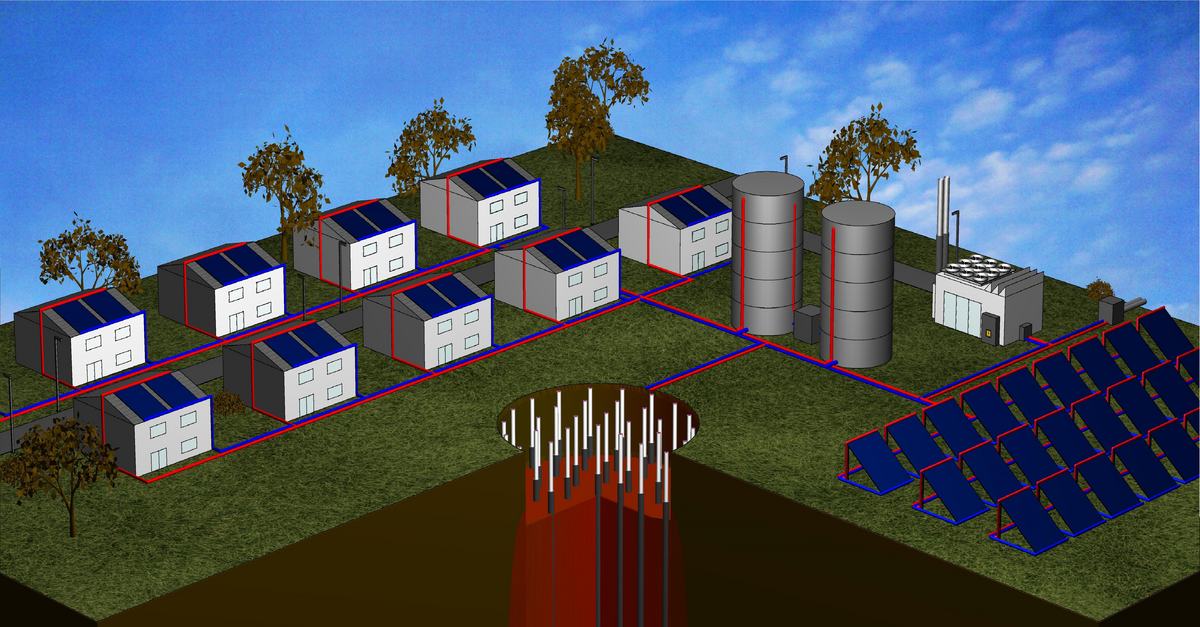
A step towards medium-deep borehole thermal energy storage systems
In our article, we emphasize the need for a heating transition in order to achieve climate protection targets. We state that local heating networks must be expanded, whereby the proportion of heat generation from environmentally friendly combined heat and power (CHP) and renewable energies should be significantly increased. This requires seasonal heat storage systems that can provide the necessary capacity in urban areas at low cost.
We show that medium-depth EWS storage systems can meet the necessary requirements by storing excess heat in summer and making it available in winter. Moving geothermal heat storage to deeper formations takes into account groundwater protection and resolves conflicts with water management. In order to maximize efficiency, an EWS storage facility should be dimensioned so that its storage capacity corresponds to the annual heat demand of a district.
By using effectively designed systems that use various combinations of combined heat and power plants, solar thermal collectors and EWS storage systems, a significant contribution can be made to reducing CO2 emissions in the heating sector. From an economic perspective, we can see that optimized systems can also help to reduce costs while simultaneously reducing emissions. Overall, we underline the urgency of making greater use of renewable energies to provide heat in order to overcome the challenges in the energy sector.
Published in: Schulte D.O., Welsch B., Formhals J. and Sass I. (2018): Der Schritt zum mitteltiefen Erdwärmesondenspeicher. Bbr Leitungsbau|Brunnebau|Geothermie, v. 69, no. 4: p. 70-75.
Download 1 MB
mit freundlicher Genehmigung der bbr